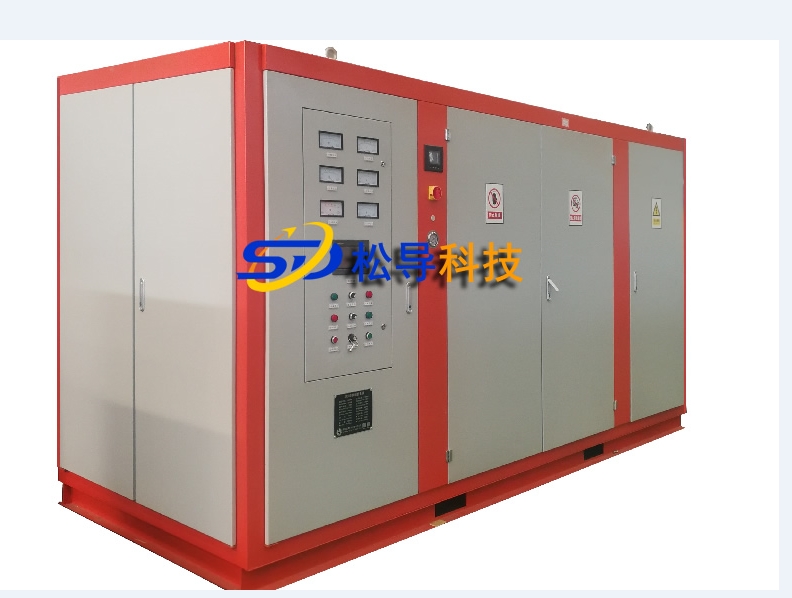- 29
- Jan
Maintenance and repair of intermediate frequency power supply system
Maintenance and repair of intermediate frequency power supply system
The intermediate frequency power supply is divided into three parts: the water system, the hydraulic system and the electrical system. The focus is on the maintenance of the electrical system.
Practice has proved that most of the faults in the intermediate frequency power supply system are directly related to the waterway. Therefore, the waterway requires that the water quality, water pressure, water temperature, and flow must meet the equipment requirements.
Electrical system maintenance: The electrical system must be overhauled regularly. Because the main circuit connection part is easy to generate heat, which can cause ignition (especially the line with the incoming line voltage above 660V or the rectifier part adopts series boost mode), many inexplicable failures occur.
Under normal circumstances, the fault of the intermediate frequency power supply can be divided into two categories: completely unable to start and unable to work normally after starting. As a general principle, when a fault occurs, the entire system should be inspected completely in the event of a power failure, which includes the following aspects:
(1) Power supply: Use a multimeter to check whether there is electricity behind the main circuit switch (contactor) and control fuse, which will rule out the possibility of disconnection of these components.
(2) Rectifier: The rectifier adopts a three-phase fully controlled bridge rectifier circuit, six thyristors, six pulse transformers and six sets of resistance-capacitance absorbing elements.
The simple way to measure the thyristor is to measure its cathode-anode and gate-cathode resistance with a multimeter electrical barrier (200Ω block), and the thyristor does not need to be removed during the measurement. Under normal circumstances, the anode-cathode resistance should be infinite, and the gate-cathode resistance should be between 10-35Ω. Too large or too small indicates that the gate of this thyristor fails, and it cannot be triggered to conduct.
(3) Inverter: The inverter includes 4 (8) fast thyristors and 4 (8) pulse transformers, which can be inspected according to the above methods.
(4) Transformer: Each winding of each transformer should be connected. Generally, the resistance of the primary side is about tens of ohms, and the secondary resistance is a few ohms. It should be noted that the primary side of the intermediate frequency voltage transformer is connected in parallel with the load, so its resistance value is zero.
(5) Capacitors: Capacitors connected in parallel with the load may be punctured. Capacitors are generally installed in groups on the capacitor rack. The group of capacitors to be punctured should be determined first during inspection. Disconnect the connection point between the bus bar of each group of capacitors and the main bus bar, and measure the resistance between the two bus bars of each group of capacitors. Normally, it should be infinite. After confirming the bad group, disconnect the copper plate of each capacitor leading to the bus bar, and check each capacitor to find the broken capacitor. Each capacitor is composed of multiple cores. The shell is one pole, and the other pole is led to the end cap through an insulator. Generally, only one core is broken down. If the lead on the insulator is jumped off, this capacitor can continue to use. Another fault of the capacitor is oil leakage, which generally does not affect the use, but pay attention to fire prevention.
The angle steel where the capacitor is installed is insulated from the capacitor frame. If the insulation breakdown will ground the main circuit, measure the resistance between the capacitor shell lead and the capacitor frame to determine the insulation status of this part.
- Water-cooled cable: The function of the water-cooled cable is to connect the intermediate frequency power supply and the induction coil. The torsion force, tilts and twists with the furnace body, so it is easy to break at the flexible connection (usually the connection side of the furnace body) after a long time. After the water-cooled cable is disconnected, the intermediate frequency power supply cannot start to work. When confirming that the cable is broken, first disconnect the water-cooled cable from the capacitor output copper bar, and measure the resistance of the cable with a multimeter (200Ω block). The resistance value is zero when it is normal, and it is infinite when it is disconnected. When measuring with a multimeter, the furnace body should be turned to the dumping position to make the water-cooled cable fall off, so that the broken part can be completely separated, so that it can be correctly judged whether it is broken or not.

